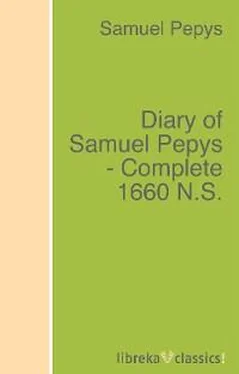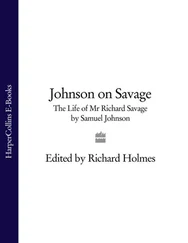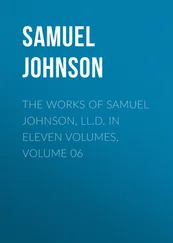Samuel Pepys - Diary of Samuel Pepys - Complete 1660 N.S.
Здесь есть возможность читать онлайн «Samuel Pepys - Diary of Samuel Pepys - Complete 1660 N.S.» — ознакомительный отрывок электронной книги совершенно бесплатно, а после прочтения отрывка купить полную версию. В некоторых случаях можно слушать аудио, скачать через торрент в формате fb2 и присутствует краткое содержание. Жанр: unrecognised, на английском языке. Описание произведения, (предисловие) а так же отзывы посетителей доступны на портале библиотеки ЛибКат.
- Название:Diary of Samuel Pepys - Complete 1660 N.S.
- Автор:
- Жанр:
- Год:неизвестен
- ISBN:нет данных
- Рейтинг книги:4 / 5. Голосов: 1
-
Избранное:Добавить в избранное
- Отзывы:
-
Ваша оценка:
- 80
- 1
- 2
- 3
- 4
- 5
Diary of Samuel Pepys - Complete 1660 N.S.: краткое содержание, описание и аннотация
Предлагаем к чтению аннотацию, описание, краткое содержание или предисловие (зависит от того, что написал сам автор книги «Diary of Samuel Pepys - Complete 1660 N.S.»). Если вы не нашли необходимую информацию о книге — напишите в комментариях, мы постараемся отыскать её.
libreka classics – These are classics of literary history, reissued and made available to a wide audience.
Immerse yourself in well-known and popular titles!
Diary of Samuel Pepys - Complete 1660 N.S. — читать онлайн ознакомительный отрывок
Ниже представлен текст книги, разбитый по страницам. Система сохранения места последней прочитанной страницы, позволяет с удобством читать онлайн бесплатно книгу «Diary of Samuel Pepys - Complete 1660 N.S.», без необходимости каждый раз заново искать на чём Вы остановились. Поставьте закладку, и сможете в любой момент перейти на страницу, на которой закончили чтение.
Интервал:
Закладка:
He was thus brought into more intimate connection with Charles II., who took the deepest interest in shipbuilding and all naval affairs. The Duke of Buckingham said of the King:—
When Pepys ceased to be Clerk of the Acts he was able to obtain the appointment for his clerk, Thomas Hayter, and his brother, John Pepys, who held it jointly. The latter does not appear to have done much credit to Samuel. He was appointed Clerk to the Trinity House in 1670 on his brother's recommendation, and when he died in 1677 he was in debt L300 to his employers, and this sum Samuel had to pay. In 1676 Pepys was Master of the Trinity House, and in the following year Master of the Clothworkers' Company, when he presented a richly-chased silver cup, which is still used at the banquets of the company. On Tuesday, 10th September, 1677, the Feast of the Hon. Artillery Company was held at Merchant Taylors' Hall, when the Duke of York, the Duke of Somerset, the Lord Chancellor, and other distinguished persons were present. On this occasion Viscount Newport, Sir Joseph Williamson, and Samuel Pepys officiated as stewards.
About this time it is evident that the secretary carried himself with some haughtiness as a ruler of the navy, and that this was resented by some. An amusing instance will be found in the Parliamentary Debates. On May 11th, 1678, the King's verbal message to quicken the supply was brought in by Mr. Secretary Williamson, when Pepys spoke to this effect:
Pepys was chosen by the electors of Harwich as their member in the short Parliament that sat from March to July, 1679, his colleague being Sir Anthony Deane, but both members were sent to the Tower in May on a baseless charge, and they were superseded in the next Parliament that met on the 17th October, 1679.
The high-handed treatment which Pepys underwent at this time exhibits a marked instance of the disgraceful persecution connected with the so-called Popish plot. He was totally unconnected with the Roman Catholic party, but his association with the Duke of York was sufficient to mark him as a prey for the men who initiated this "Terror" of the seventeenth century. Sir. Edmund Berry Godfrey came to his death in October, 1678, and in December Samuel Atkins, Pepys's clerk, was brought to trial as an accessory to his murder. Shaftesbury and the others not having succeeded in getting at Pepys through his clerk, soon afterwards attacked him more directly, using the infamous evidence of Colonel Scott. Much light has lately been thrown upon the underhand dealings of this miscreant by Mr. G. D. Scull, who printed privately in 1883 a valuable work entitled, "Dorothea Scott, otherwise Gotherson, and Hogben of Egerton House, Kent, 1611-1680."
John Scott (calling himself Colonel Scott) ingratiated himself into acquaintance with Major Gotherson, and sold to the latter large tracts of land in Long Island, to which he had no right whatever. Dorothea Gotherson, after her husband's death, took steps to ascertain the exact state of her property, and obtained the assistance of Colonel Francis Lovelace, Governor of New York. Scott's fraud was discovered, and a petition for redress was presented to the King. The result of this was that the Duke of York commanded Pepys to collect evidence against Scott, and he accordingly brought together a great number of depositions and information as to his dishonest proceedings in New England, Long Island, Barbadoes, France, Holland, and England, and these papers are preserved among the Rawlinson Manuscripts in the Bodleian. Scott had his revenge, and accused Pepys of betraying the Navy by sending secret particulars to the French Government, and of a design to dethrone the king and extirpate the Protestant religion. Pepys and Sir Anthony Deane were committed to the Tower under the Speaker's warrant on May 22nd, 1679, and Pepys's place at the Admiralty was filled by the appointment of Thomas Hayter. When the two prisoners were brought to the bar of the King's Bench on the 2nd of June, the Attorney-General refused bail, but subsequently they were allowed to find security for L30,000.
Pepys was put to great expense in collecting evidence against Scott and obtaining witnesses to clear himself of the charges brought against him. He employed his brother-in-law, Balthasar St. Michel, to collect evidence in France, as he himself explains in a letter to the Commissioners of the Navy:—
In the end Scott refused to acknowledge to the truth of his original deposition, and the prisoners were relieved from their bail on February 12th, 1679-80. John James, a butler previously in Pepys's service, confessed on his deathbed in 1680 that he had trumped up the whole story relating to his former master's change of religion at the instigation of Mr. William Harbord, M.P. for Thetford.
Pepys wrote on July 1st, 1680, to Mrs. Skinner:
William Harbord, of Cadbury, co. Somerset, second son of Sir Charles Harbord, whom he succeeded in 1682 as Surveyor. General of the Land Revenues of the Crown, was Pepys's most persistent enemy. Several papers referring to Harbord's conduct were found at Scott's lodging after his flight, and are now preserved among the Rawlinson MSS. in the Bodleian. One of these was the following memorandum, which shows pretty plainly Pepys's opinion of Harbord:—
Besides Scott's dishonesty in his dealings with Major Gotherson, it came out that he had cheated the States of Holland out of L7,000, in consequence of which he was hanged in effigy at the Hague in 1672. In 1682 he fled from England to escape from the law, as he had been guilty of wilful murder by killing George Butler, a hackney coachman, and he reached Norway in safety, where he remained till 1696. In that year some of his influential friends obtained a pardon for him from William III., and he returned to England.
In October, 1680, Pepys attended on Charles II. at Newmarket, and there he took down from the King's own mouth the narrative of his Majesty's escape from Worcester, which was first published in 1766 by Sir David Dalrymple (Lord Hailes) from the MS., which now remains in the Pepysian library both in shorthand and in longhand? It is creditable to Charles II. and the Duke of York that both brothers highly appreciated the abilities of Pepys, and availed themselves of his knowledge of naval affairs.
In the following year there was some chance that Pepys might retire from public affairs, and take upon himself the headship of one of the chief Cambridge colleges. On the death of Sir Thomas Page, the Provost of King's College, in August, 1681, Mr. S. Maryon, a Fellow of Clare Hall, recommended Pepys to apply to the King for the appointment, being assured that the royal mandate if obtained would secure his election. He liked the idea, but replied that he believed Colonel Legge (afterwards Lord Dartmouth) wanted to get the office for an old tutor. Nothing further seems to have been done by Pepys, except that he promised if he were chosen to give the whole profit of the first year, and at least half of that of each succeeding year, to "be dedicated to the general and public use of the college." In the end Dr. John Coplestone was appointed to the post.
On May 22nd, 1681, the Rev. Dr. Milles, rector of St. Olave's, who is so often mentioned in the Diary, gave Pepys a certificate as to his attention to the services of the Church. It is not quite clear what was the occasion of the certificate, but probably the Diarist wished to have it ready in case of another attack upon him in respect to his tendency towards the Church of Rome.
Early in 1682 Pepys accompanied the Duke of York to Scotland, and narrowly escaped shipwreck by the way. Before letters could arrive in London to tell of his safety, the news came of the wreck of the "Gloucester" (the Duke's ship), and of the loss of many lives. His friends' anxiety was relieved by the arrival of a letter which Pepys wrote from Edinburgh to Hewer on May 8th, in which he detailed the particulars of the adventure. The Duke invited him to go on board the "Gloucester" frigate, but he preferred his own yacht (the "Catherine "), in which he had more room, and in consequence of his resolution he saved himself from the risk of drowning. On May 5th the frigate struck upon the sand called "The Lemon and Oar," about sixteen leagues from the mouth of the Humber. This was caused by the carelessness of the pilot, to whom Pepys imputed "an obstinate over-weening in opposition to the contrary opinions of Sir I. Berry, his master, mates, Col. Legg, the Duke himself, and several others, concurring unanimously in not being yet clear of the sands." The Duke and his party escaped, but numbers were drowned in the sinking ship, and it is said that had the wreck occurred two hours earlier, and the accompanying yachts been at the distance they had previously been, not a soul would have escaped.
Читать дальшеИнтервал:
Закладка:
Похожие книги на «Diary of Samuel Pepys - Complete 1660 N.S.»
Представляем Вашему вниманию похожие книги на «Diary of Samuel Pepys - Complete 1660 N.S.» списком для выбора. Мы отобрали схожую по названию и смыслу литературу в надежде предоставить читателям больше вариантов отыскать новые, интересные, ещё непрочитанные произведения.
Обсуждение, отзывы о книге «Diary of Samuel Pepys - Complete 1660 N.S.» и просто собственные мнения читателей. Оставьте ваши комментарии, напишите, что Вы думаете о произведении, его смысле или главных героях. Укажите что конкретно понравилось, а что нет, и почему Вы так считаете.












